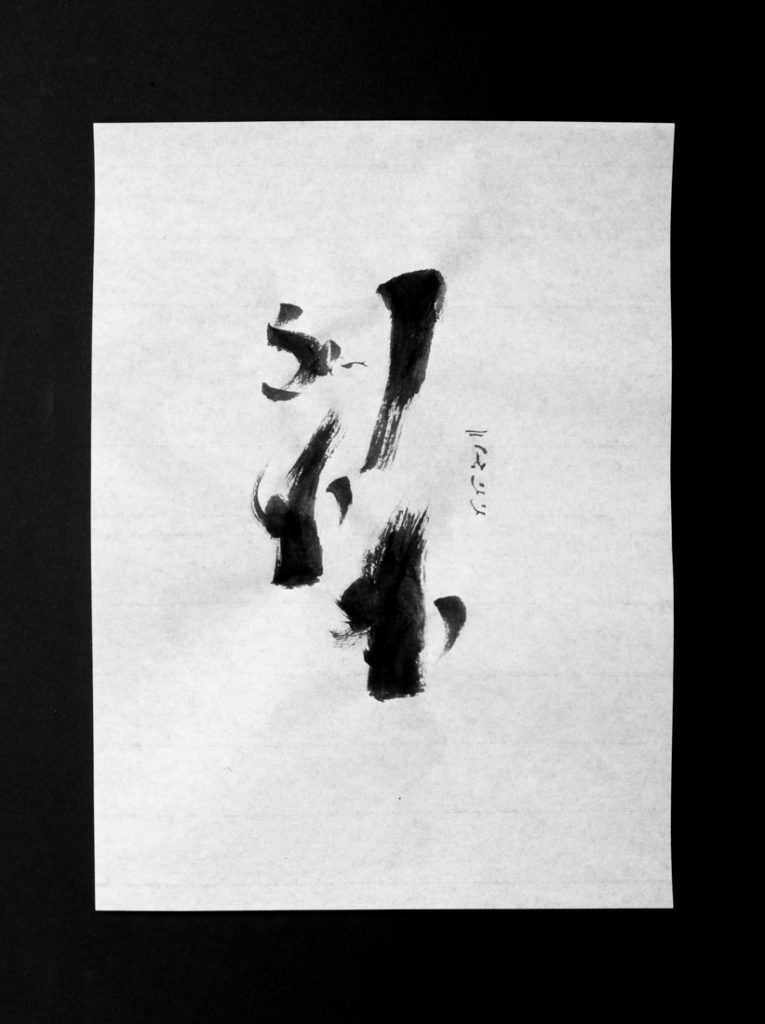Logographing Rice and Bamboo
I am continuing a series of calligraphy pieces in Baybayin script (ancient, Filipino writing system) to examine the meaning and aesthetic of one word or phrase in Tagalog. The combining of Baybayin alphasyllabic letters into an aesthetic whole, I am coining Logographing.
In Tagalog, there are at least seven different words for rice, showing how important rice is to the culture!
|
English
|
Tagalog
|
Tagalog in Baybayin script
|
|
unmilled rice
|
palay
|
ᜉᜎᜌ᜴
|
|
milled rice
|
bigas
|
ᜊᜒᜄᜐ᜴
|
|
cooked rice
|
kanin
|
ᜃᜈᜒᜈ᜴
|
|
rice porridge
|
lugaw
|
ᜎᜓᜄᜏ᜴
|
|
burned rice
|
tutong
|
ᜆᜓᜆᜓᜅ᜴
|
|
left-over rice
|
bahaw
|
ᜊᜑᜏ᜴
|
|
fried rice
|
sinangag
|
ᜐᜒᜈᜅ᜴ᜀᜄ᜴
|
One of my favorite words is “tutong” (ᜆᜓᜆᜓᜅ᜴) which refers to the burned, crispy rice at the bottom of the pot. Many cook this unintentionally but there are recipes (tutong na kanin, “burned cooked rice”) that exist in the Philippines as well as in other cultures that use burned rice. Korean people call it “nurungji” (누룽지), in Chinese it is “mi guoba” (米鍋耙), in Japanese it is “okoge” (お焦げ), in Vietnamese it is “cơm cháy.”
Rice
It’s an amazing word, so I logographed it in Baybayin script. I also did “kanin” (ᜃᜈᜒᜈ᜴) and “sinangag” (ᜐᜒᜈᜅ᜴ᜀᜄ᜴) because who doesn’t love cooked or fried rice!?



Bamboo
I am finishing reading the Filipino poems (ambahans) from Antoon Postma’s Treasure of a Minority. Filipinos use nature in creative and allegorical ways in their poetry. Monkeys, hurricanes, rivers, and bamboo are abundant. Below is a logograph of “kawayan” (ᜃᜏᜌᜈ᜴).

If you are learning Baybayin, it may be confusing because I do switch between strict traditional Baybayin (no end consonants, no cross kudlits nor pamudpó) to modern Baybayin, which uses modernized notation for easier reading. Ancient Filipinos would say and understand “kawayan” but would only write it as “ᜃᜏᜌ” not “ᜃᜏᜌᜈ᜴” nor “ᜃᜏᜌᜈ᜔”. Baybayin is an alphasyllabary which does not traditionally denote end constants such as the “n” in “kawayan” or the “ng” and last “g” in “sinangag.” I go back an forth due to aesthetic reasons! :D
Links
- See more Logographing and calligraphy on my Instagram:
- A fantastic Filipino musician, Shawn Wasabi, made a song about burned rice:
- If you see only squares above where Baybayin script should be, you need to download a Baybayin font/typeface:
Leave a Reply